While we love it when green leaves take over our gardens, sometimes we need pops of other colors to keep things lively. Explore the color wheel to add blues, greens, pinks, purples, and yellows to your flower beds, but don’t forget about the easiest color to incorporate: white. Adding this serene contrasting hue will help balance out all of the green and give your eye places to rest in the panorama of your space. When turning to white flowers, there are lots of options, from the beloved rose to the Southern-favorite–and ever-fragrant–gardenia. Train a profusion of jasmine up a trellis or plant some lilies for even more opportunities to bask in beautiful blooming perfumes throughout the seasons. Here are the 15 loveliest white flowers that will enliven your garden this year.
Rose
- Botanical Name: Rosa spp.
- Sun Exposure: Full, partial
- Soil Type: Well-drained
- Soil pH: Neutral
The Southern-favorite rose comes in a rainbow of hues, and many modern roses come in shades of white and cream. White shrubs include «Macy’s Pride,» «Sally Holmes,» and «Snowdrift,» while white hybrid teas include «Garden Party,» «John F. Kennedy,» and «Sugar Moon.» Plant «Iceberg,» «Prosperity», and «White Dawn» for pale climbing roses.
Lily
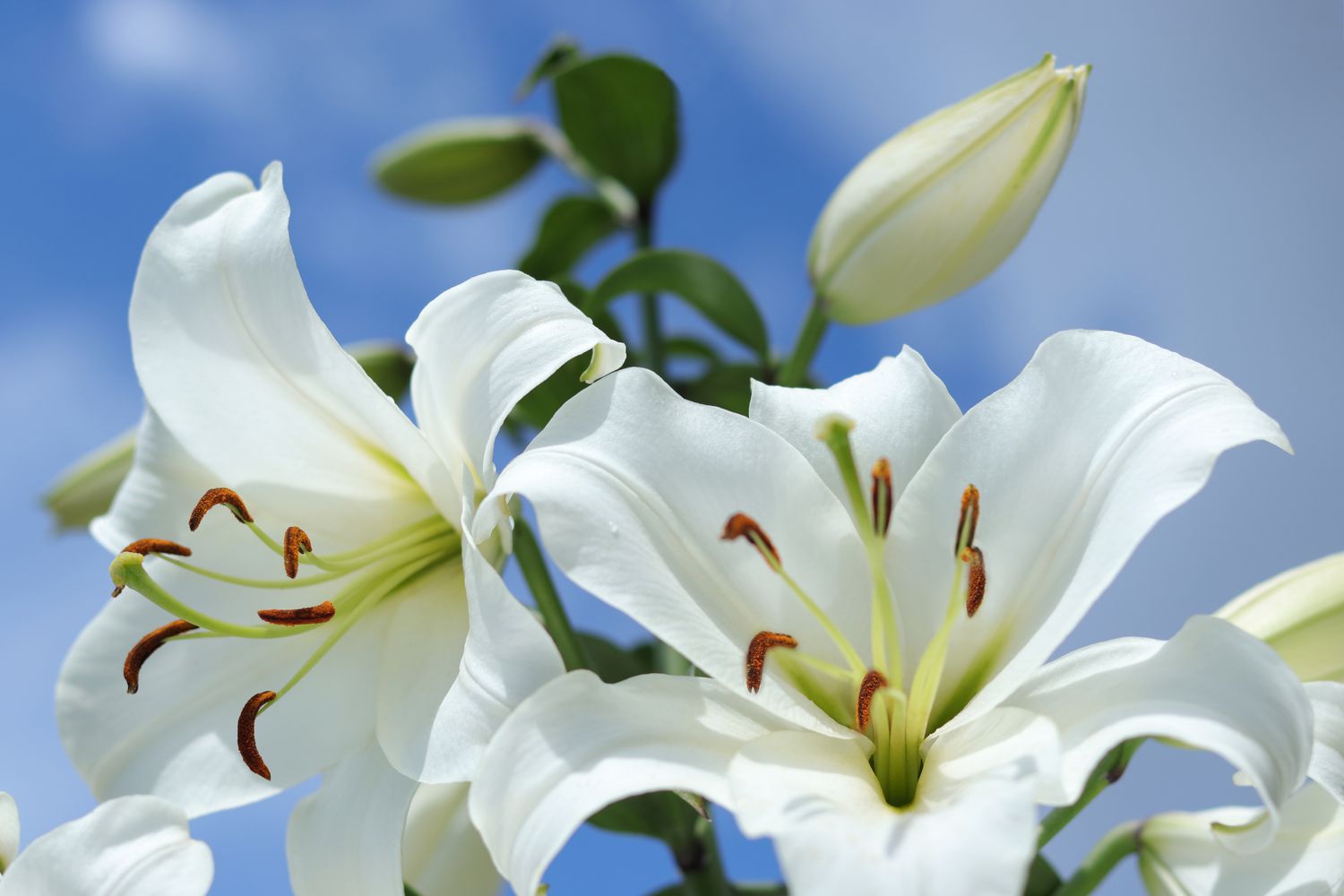
- Botanical Name: Lilum spp.
- Sun Exposure: Full or filtered light
- Soil Type: Well-drained
- Soil pH: Slightly acidic
Lilies have long been loved for their sprawling, curling blooms, which are often fragrant. Many hybrids come in white hues, including «Navona» and «Casa Blanca». Other lilies fade to white at the edges or are speckled with white.
Gardenia
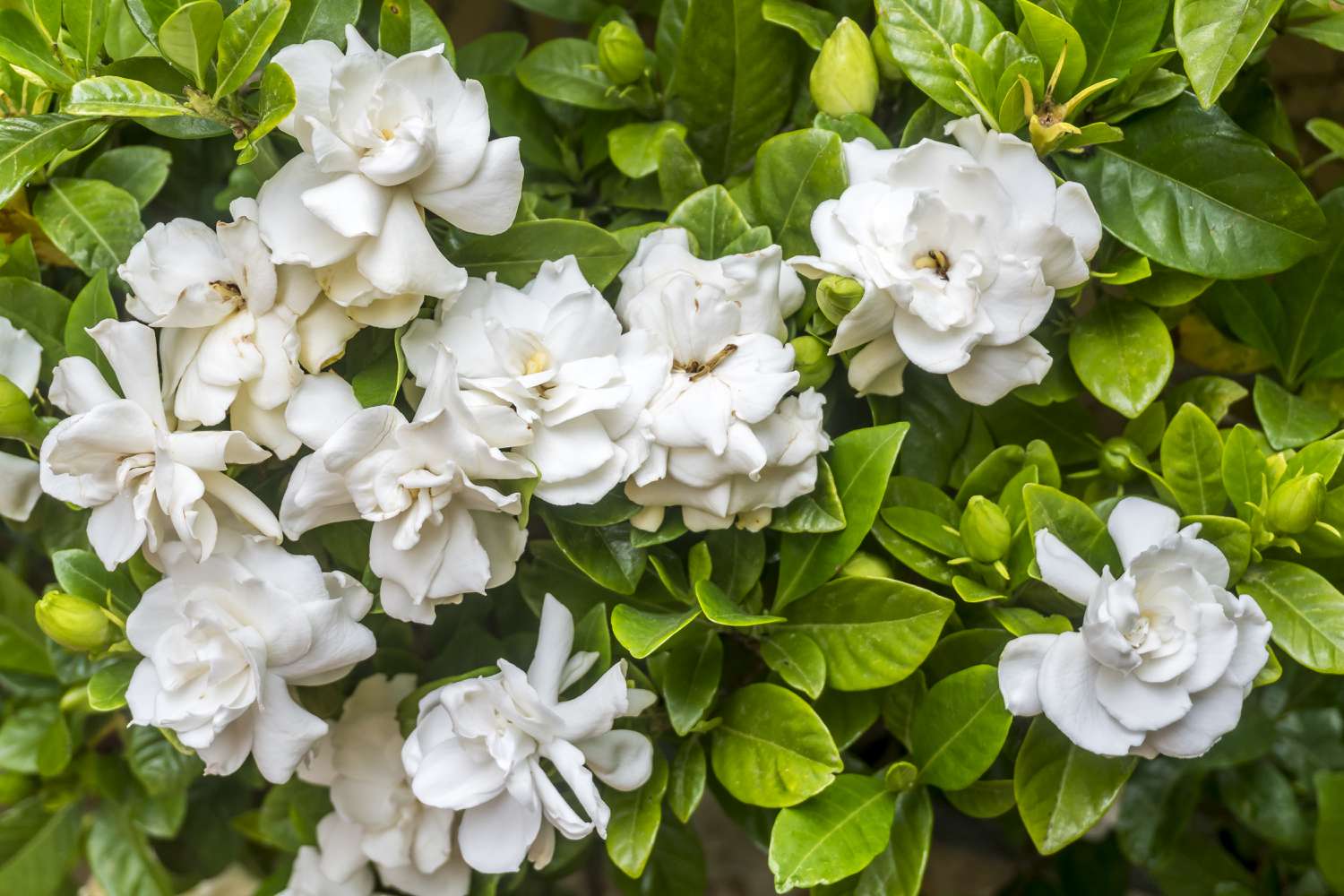
- Botanical Name: Gardenia spp.
- Sun Exposure: Full, partial
- Soil Type: Well-drained
- Soil pH: Acidic
Few garden flowers are as beloved as gardenias, creamy blooms that emit a strong fragrance when they bloom, which could be in spring, summer, or fall, depending on the selection. The flowers are accompanied by shiny green leaves. ‘Miami Supreme’ is a popular selection for gardeners in South Florida, while ‘Jubilation’ is a compact gardenia, growing to 3-4 feet tall and bearing blooms in both spring and fall.
Chrysanthemum
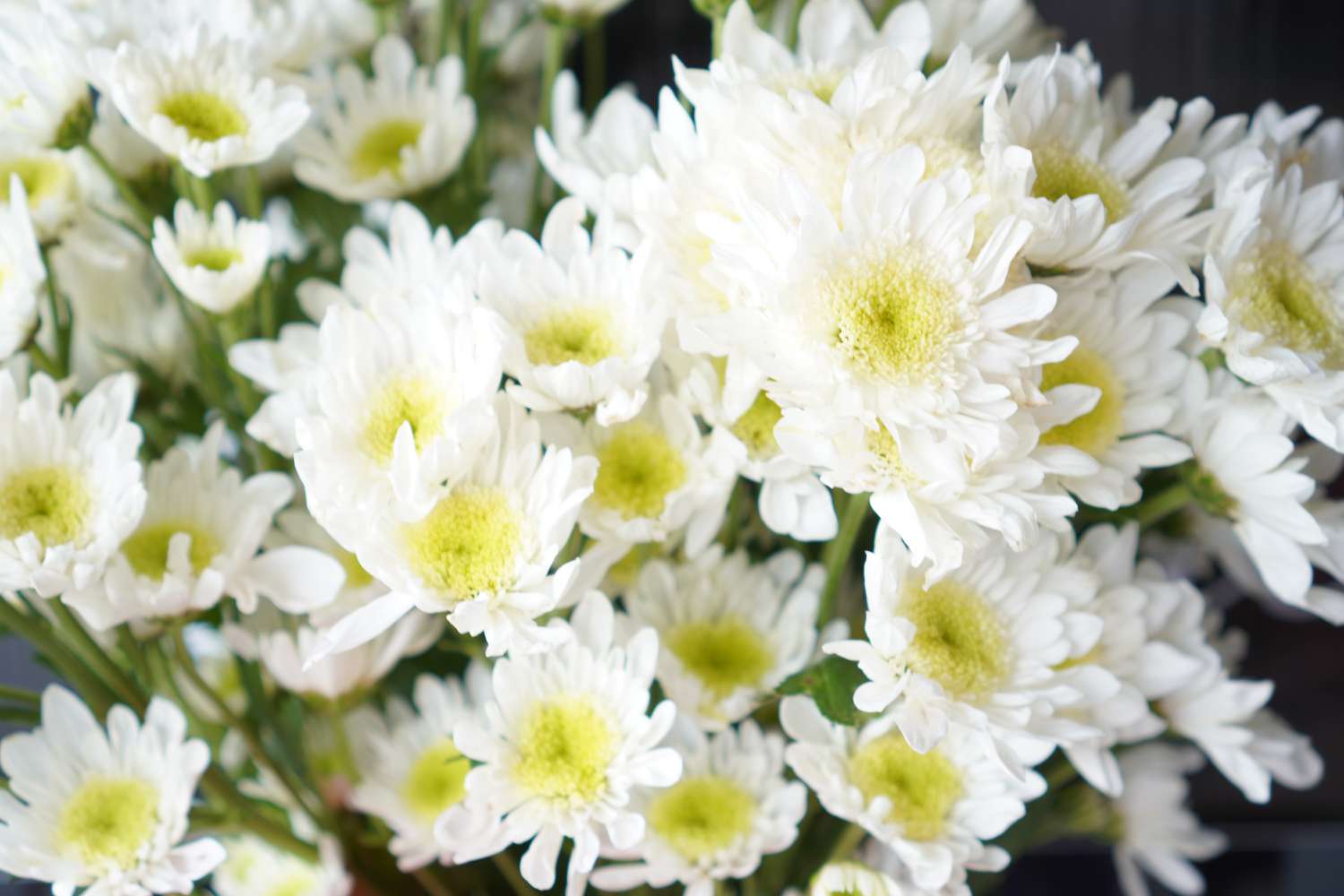
- Botanical Name: Chrysanthemum spp.
- Sun Exposure: Full
- Soil Type: Well-drained
- Soil pH: Neutral
Mums are a garden hero anytime of year, but we especially love them in fall. While many gardeners gravitate to auburn and copper-hued blooms, chrysanthemums also bloom in white. Their shallow root systems mean that they prefer to be planted in well-draining soil.
Hydrangea
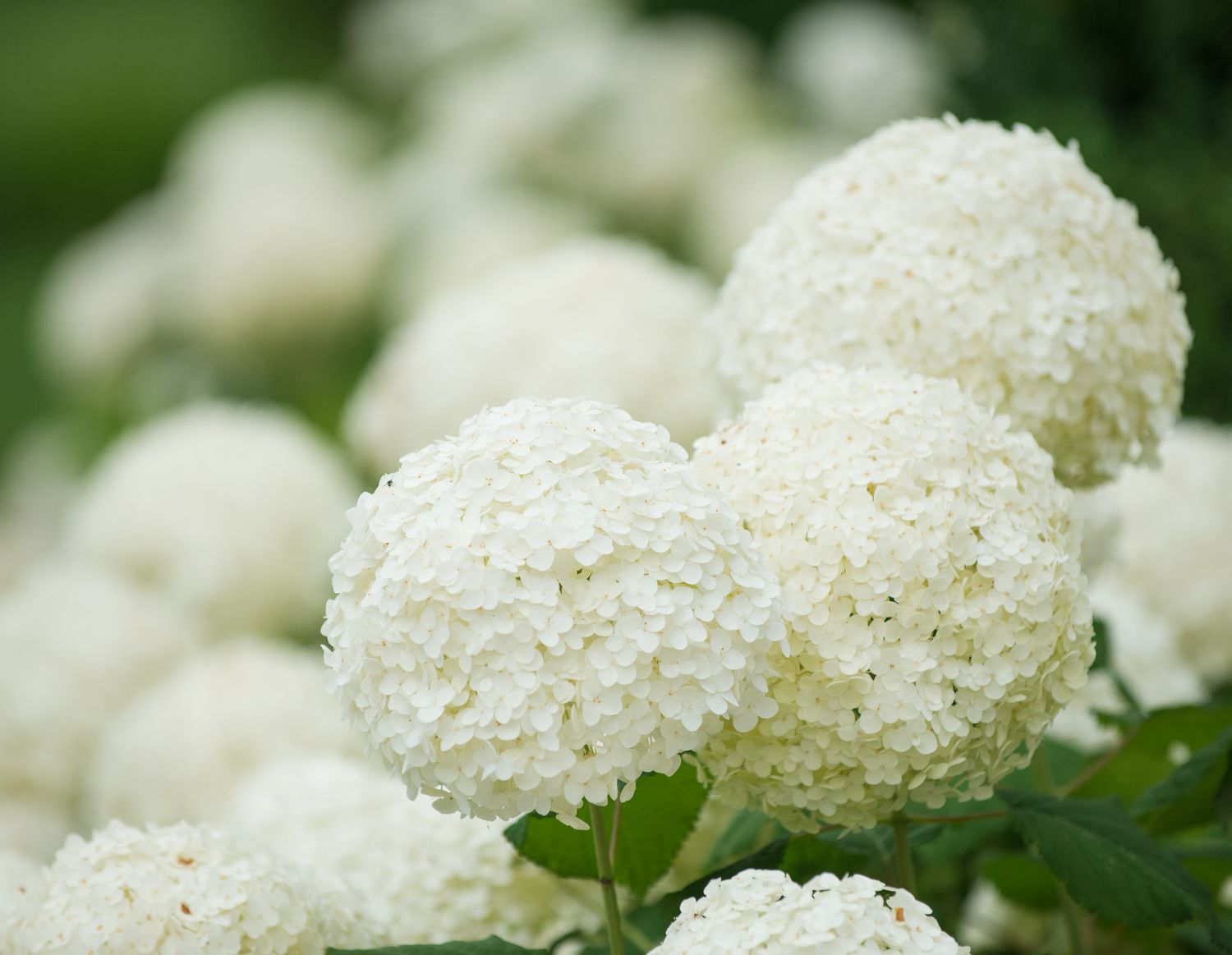
- Botanical Name: Hydreangea spp.
- Sun Exposure: Partial
- Soil Type: Well-drained
- Soil pH: Neutral
While hydrangeas can bloom in a variety of colors depending on the pH of the soil, that pH does not affect white flowers and will not cause them to change colors. Turn to Hydrangea quercifolia ‘Snowflake’ or Hydrangea arborescens ‘Incrediball’ or ‘White Dome’ for pale blooms.
Daffodil
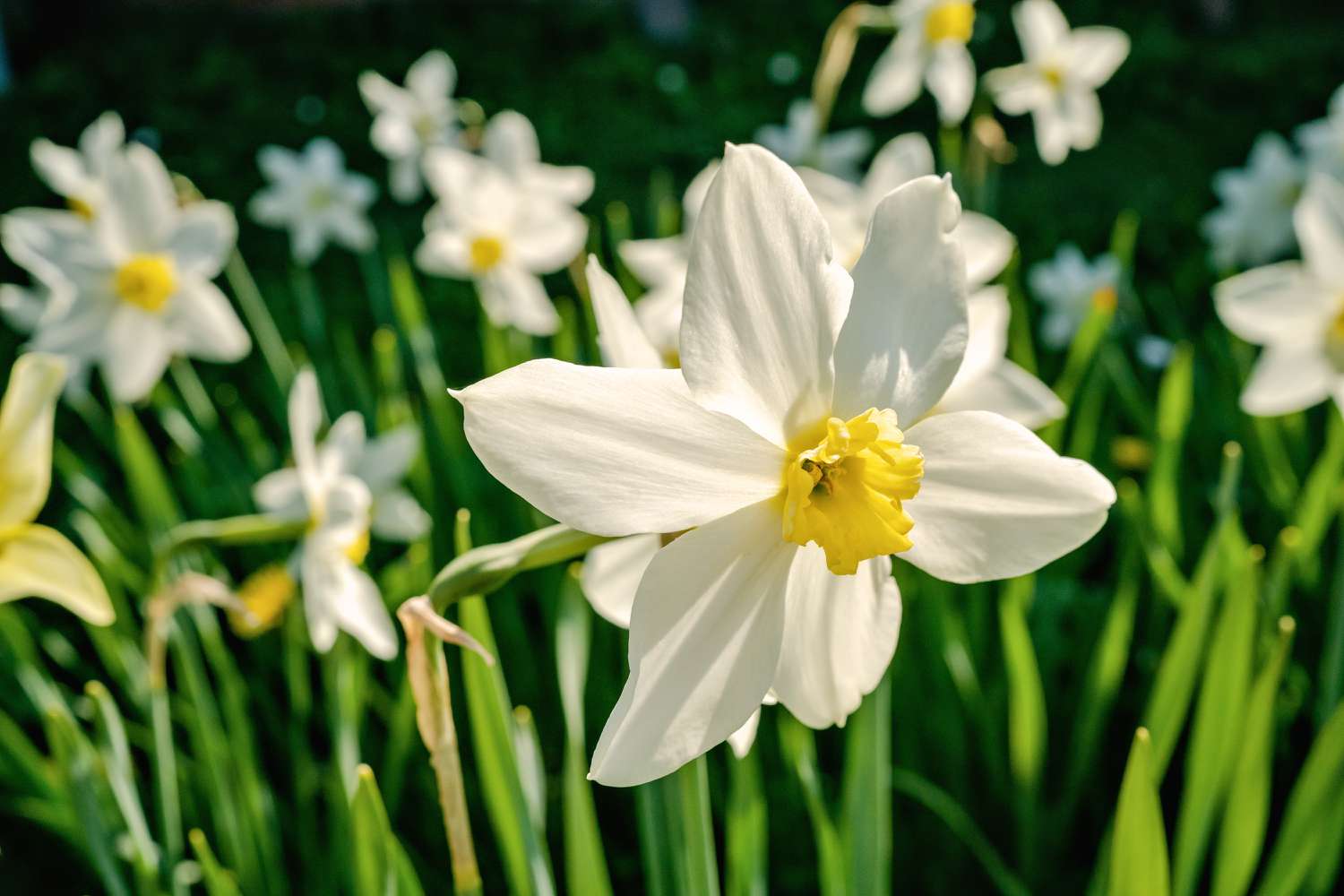
- Botanical Name: Narcissus spp.
- Sun Exposure: Partial
- Soil Type: Well-drained
- Soil pH: Slightly Acidic
While the best-known daffodils might be bright yellow, these late-winter, early-spring blooms come in shades of white and cream too. Narcissus ‘Thalia’ blooms white and, under the right conditions, typically produces showy flowers in April and May.
Gerbera Daisy
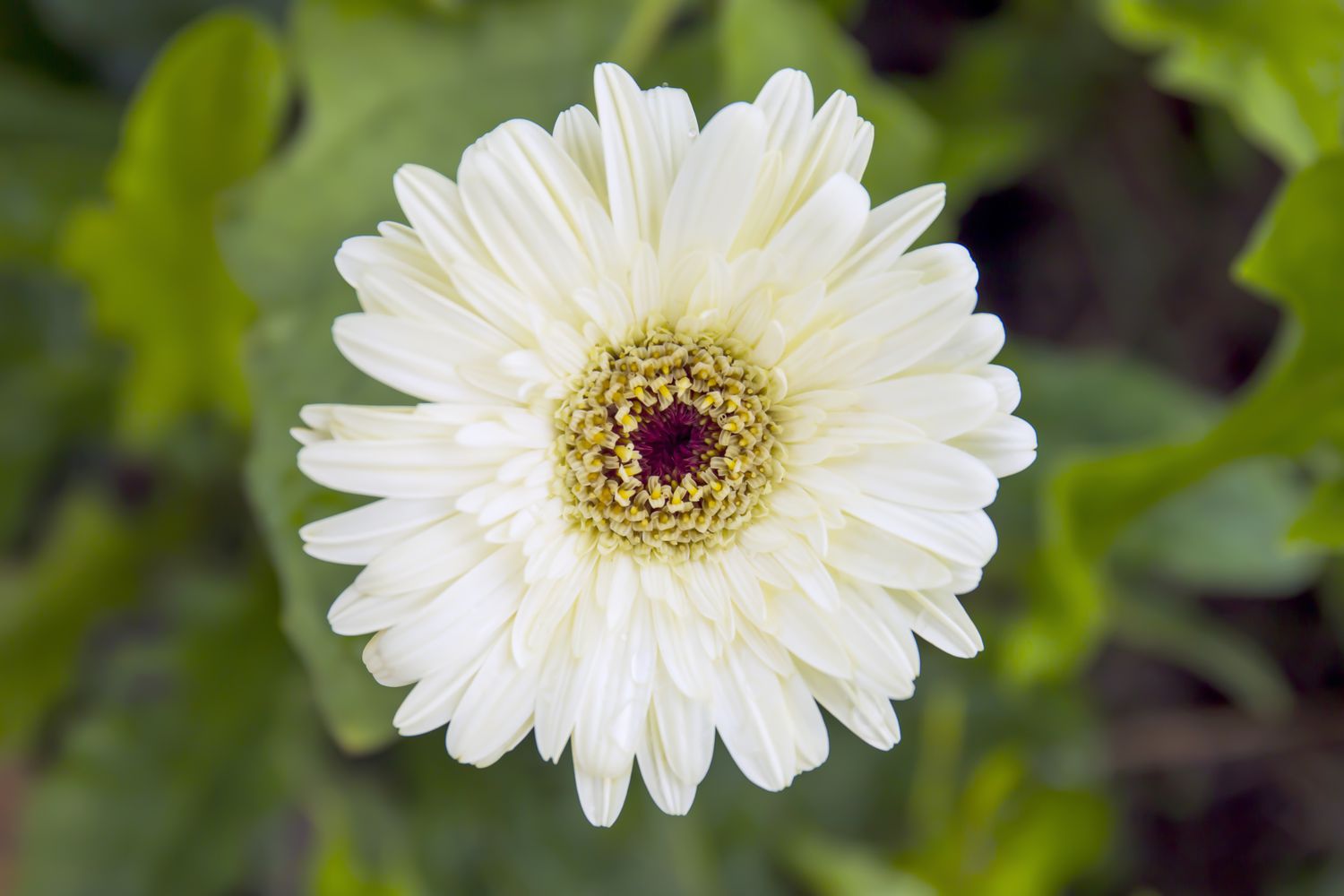
- Botanical Name: Gerbera spp.
- Sun Exposure: Full, partial
- Soil Type: Well-drained
- Soil pH: Slightly acidic
Oft-touted as the friendliest flower in the garden, gerbera daisies come in a variety of colors, including white. They emerge in a round of lobed leaves with centers of different hues, depending on the selection. To thrive, they appreciate being well watered and receiving plenty of full sunlight.
Magnolia
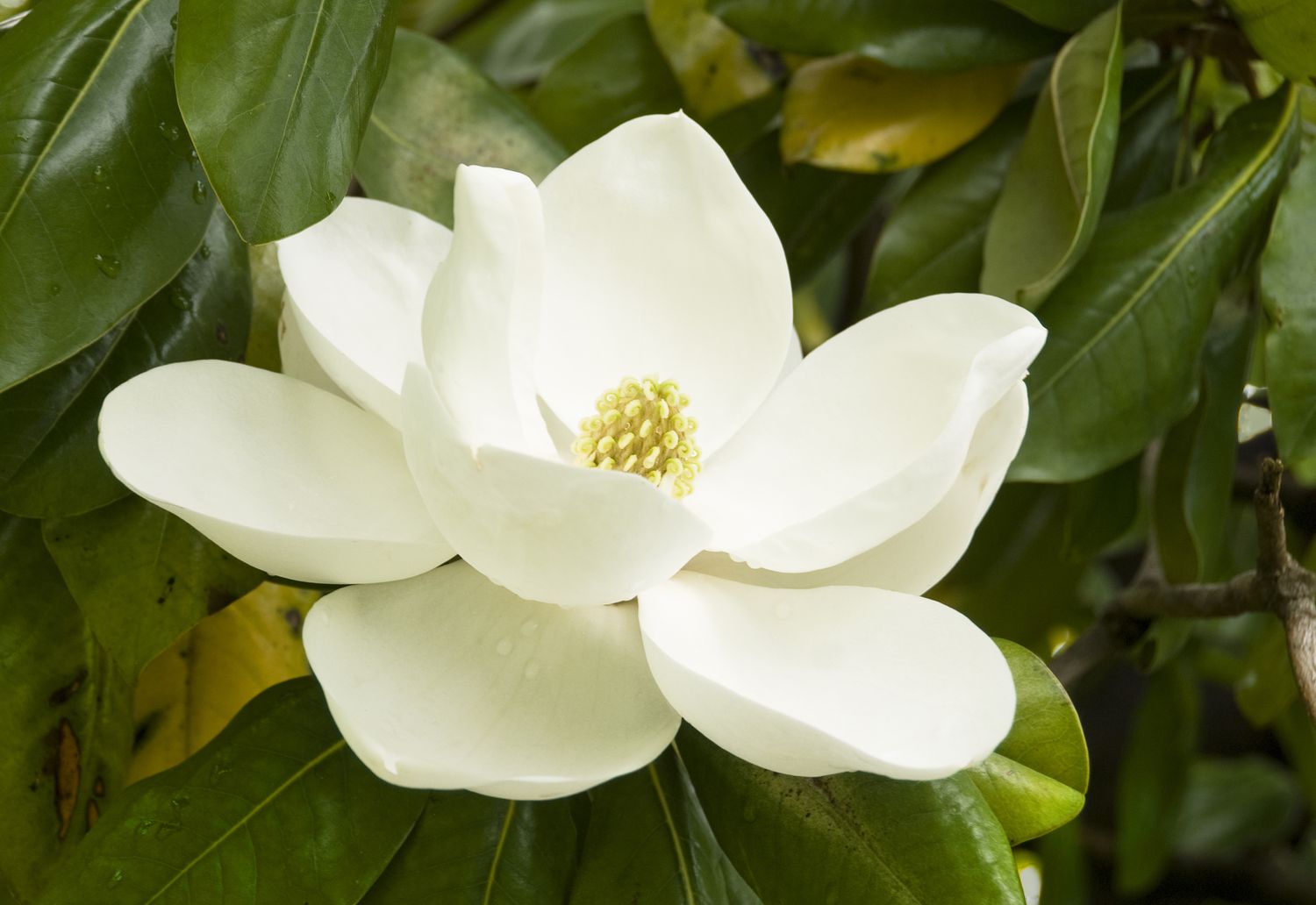
- Botanical Name: Magnolia spp.
- Sun Exposure: Partial
- Soil Type: Well-drained
- Soil pH: Neutral
Magnolias are the flowering trees that epitomize the South, and their large white blooms have made them the state tree and state flower of several states. Magnolia grandiflora is one of the most iconic of the bunch, though they do have constant leaf drop and can take up to 10 years before they bloom for the first time.
Dogwood
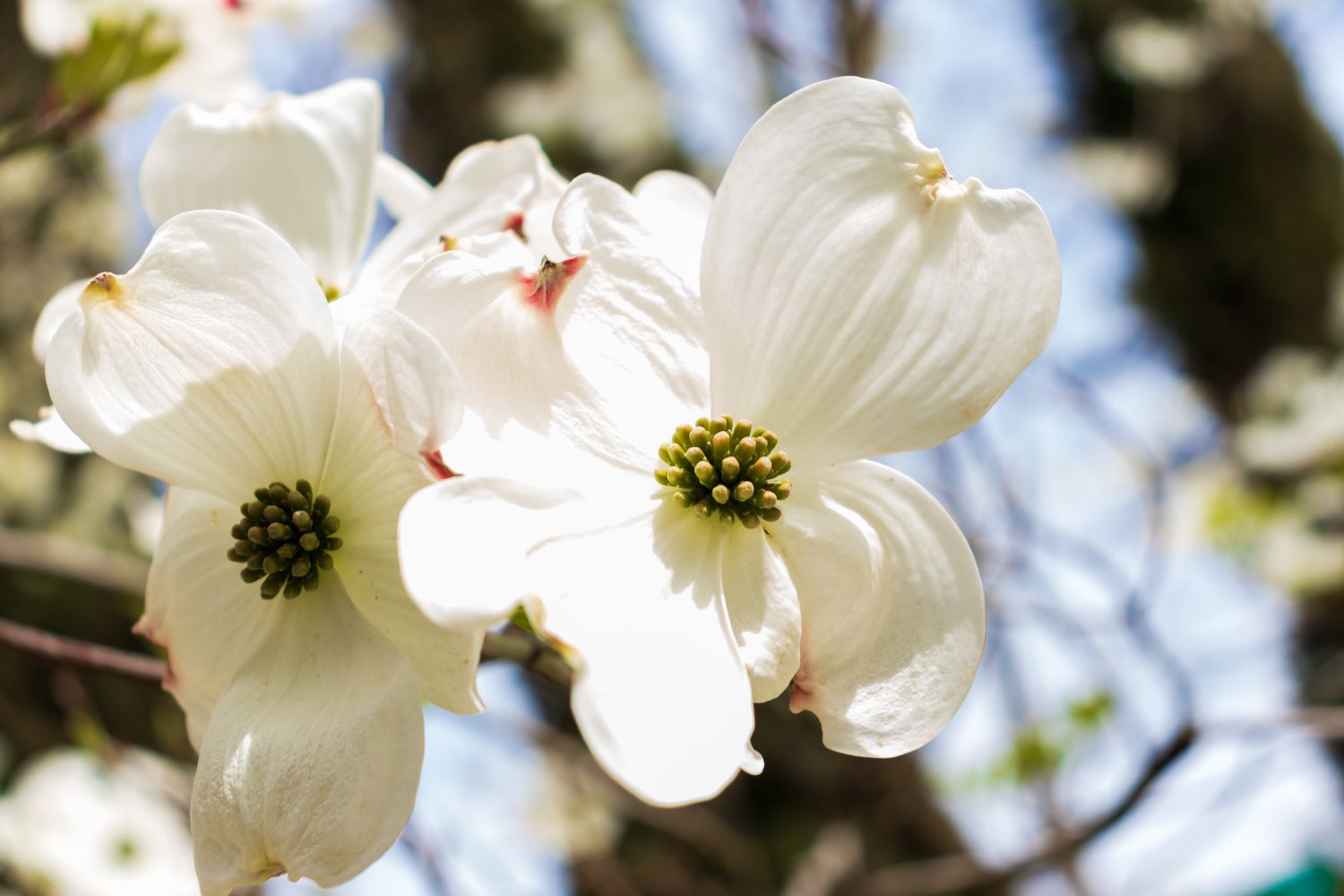
- Botanical Name: Cornus spp.
- Sun Exposure: Full, partial
- Soil Type: Well-drained
- Soil pH: Slightly acidic
Many types of these trees exist, though the most popular in the South is Cornus florida, also known as the flowering dogwood. What we appreciate as “flowers” on these trees in springtime are actually not flowers at all. The blooms are inconspicuous, while the showy, notched bracts are what we actually notice on the trees when they bloom.
Peony
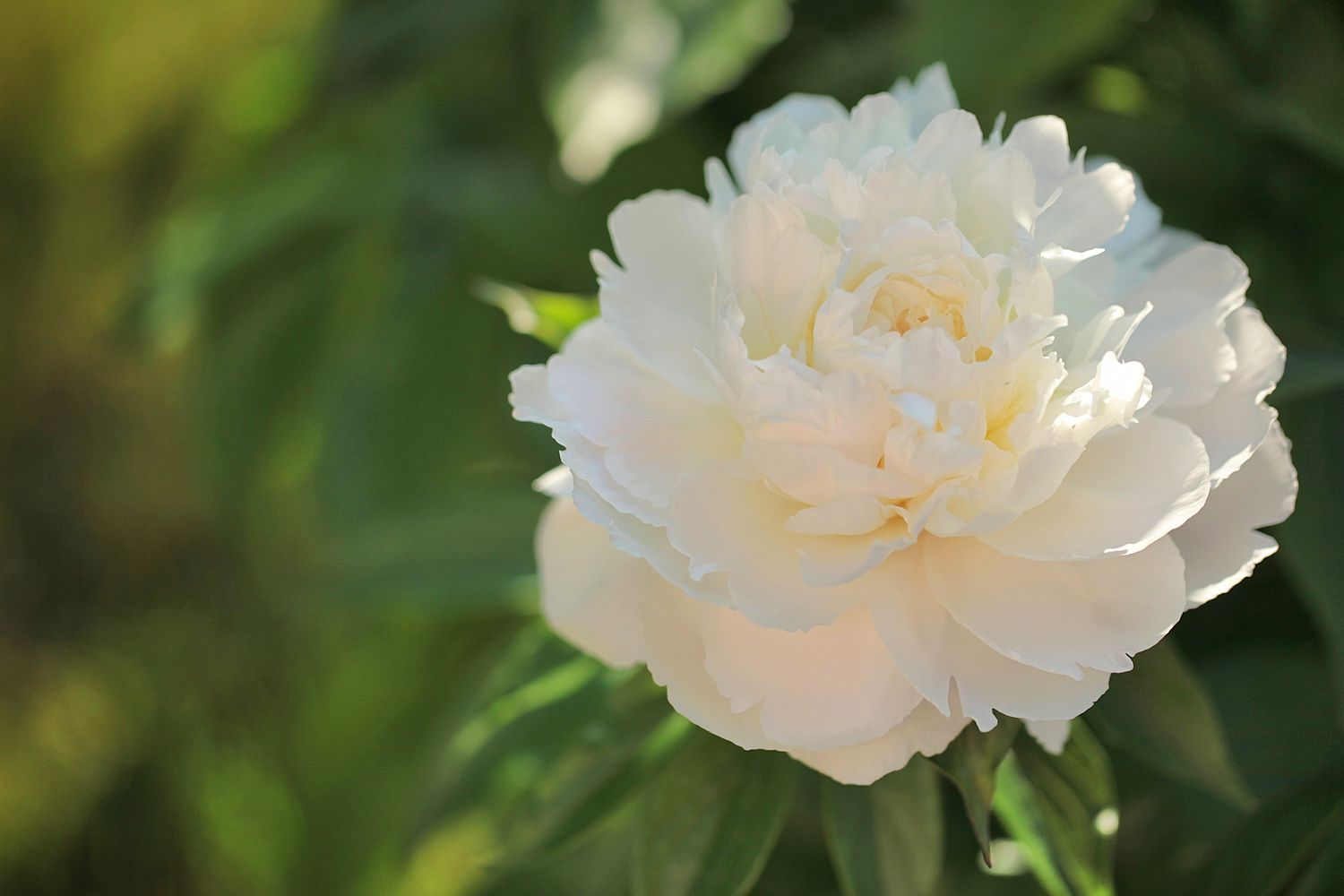
- Botanical Name: Paeonia spp.
- Sun Exposure: Full, partial
- Soil Type: Well-drained
- Soil pH: Slightly acidic
These flowering plants produce big, bountiful blooms, and they come in a variety of species and forms. ‘Kelway’s Glorious’ has fragrant double white blooms, while ‘Krinkled White’ blooms early in the season and has single blooms that bear white petals and yellow stamens.
Hyacinth
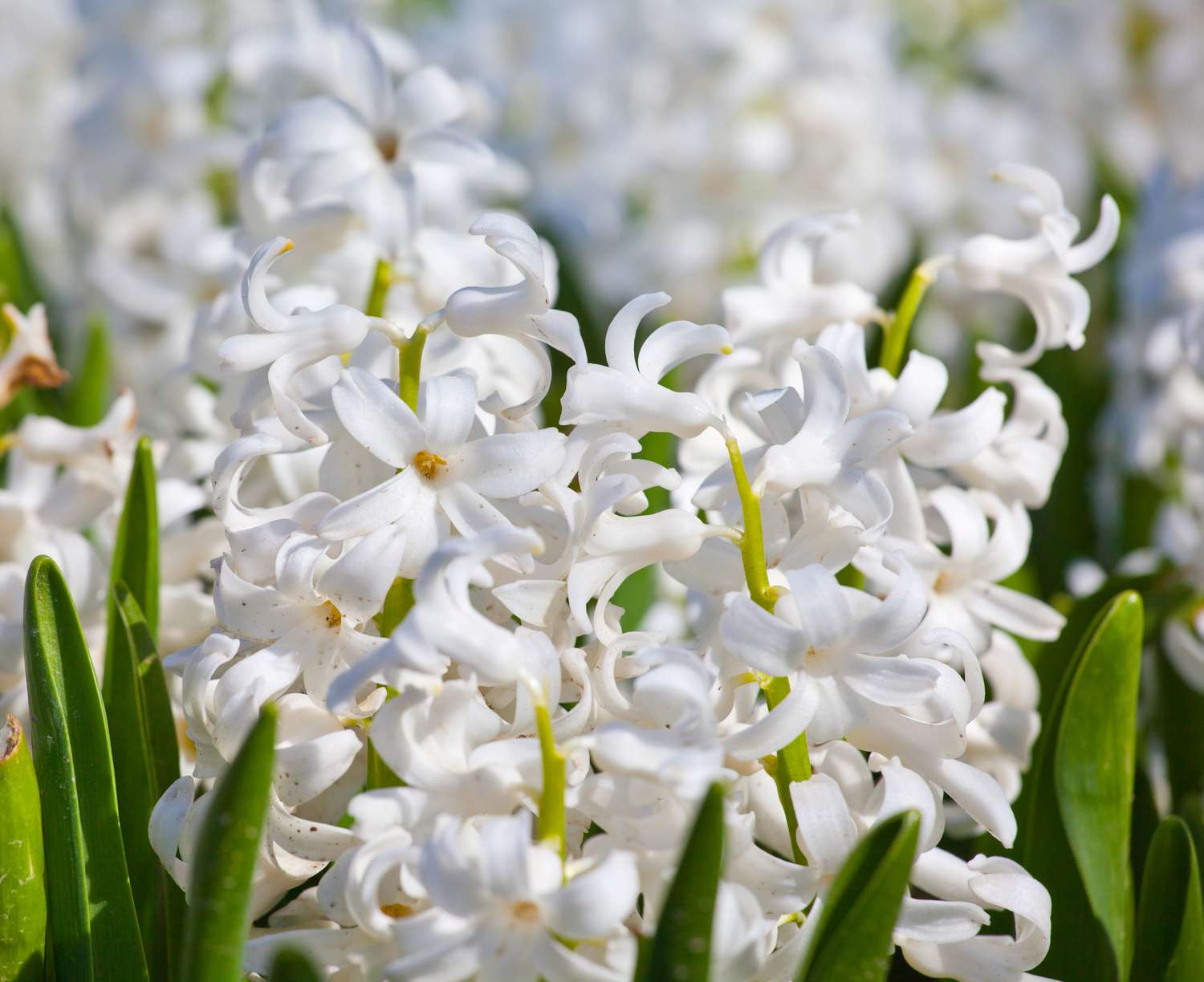
- Botanical Name: Hyacinthus spp.
- Sun Exposure: Full, partial
- Soil Type: Well-drained
- Soil pH: Neutral
The common hyacinth, or Hyacinthus orientalis, is a perennial that blooms from bulbs in the springtime. The flowers are copious, and shaped like bells, and they appear on spikes during the flowering season. «Top White» is a Dutch hyacinth with creamy white blooms and long, strap-shaped leaves.
Star Jasmine

- Botanical Name: Trachelospermum spp.
- Sun Exposure: Full, partial
- Soil Type: Well-drained
- Soil pH: Slightly acidic
Star jasmine (Trachelospermum jasminoides), a vining shrub favored for its fragrant blooms and spreading habit, is an old favorite in Southern gardens. It can grow 20-30 feet without supports and even farther with them. The leaves mature to dark green alongside small, creamy-hued, perfumed blooms.
Calla Lily

- Botanical Name: Zantedeschia spp.
- Sun Exposure: Full, partial
- Soil Type: Well-drained
- Soil pH: Slightly acidic
The common calla, also known as Zantedeschia aethiopica, produces funnel- or trumpet-shaped blooms, also known as spathes, in shades of pure or creamy white during the spring and early summer months. They usually grow 2-4 feet tall.
Camellia
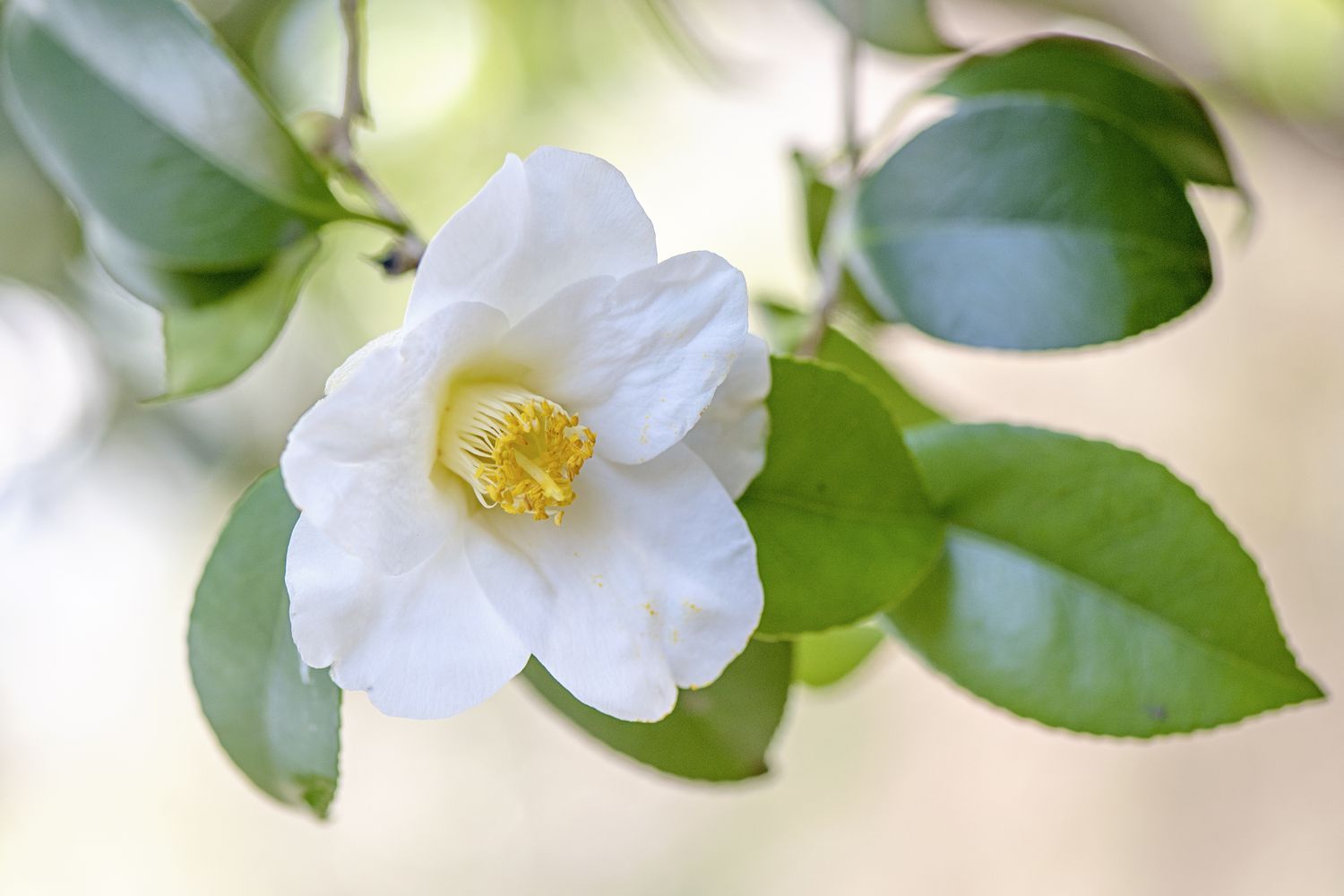
- Botanical Name: Camellia spp.
- Sun Exposure: Partial
- Soil Type: Well-drained
- Soil pH: Acidic
Camellias, the gorgeous grandmothers of Southern gardens, come in a variety of hybrids. The most well-known species is Camellia japonica, or common camellia, and favorites include ‘Alba Plena,’ which has large white blooms; ‘Nuccio’s Cameo,’ which has formal double blooms; and ‘Silver Waves,’ which has large, white semidouble flowers.
Snapdragon
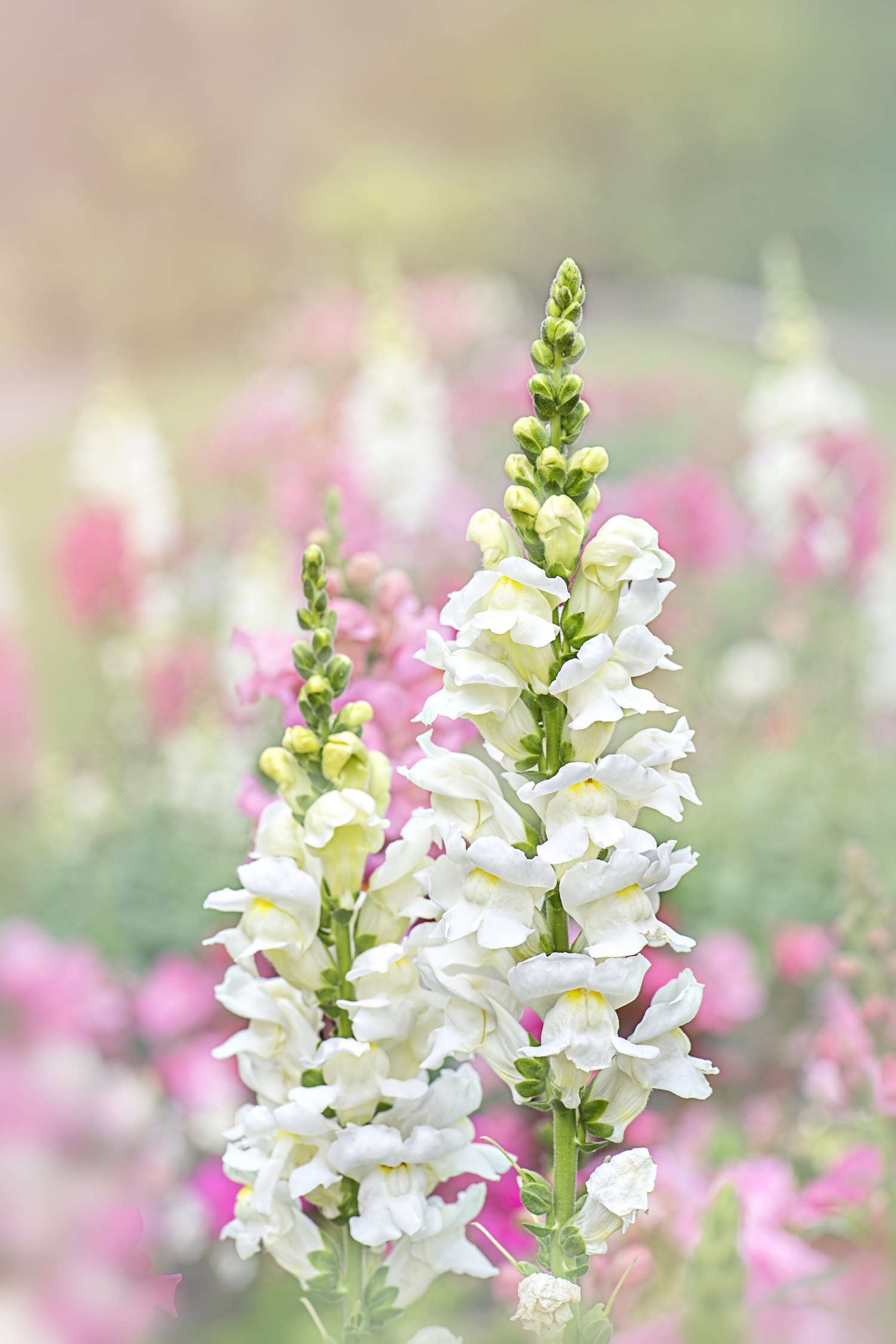
- Botanical Name: Antirrhinum spp.
- Sun Exposure: Full
- Soil Type: Well-drained
- Soil pH: Neutral
Known as hardy annuals, the spiky blooms of snapdragons never fail to bring cheer to the garden. They grow best with plenty of water but also appreciate well-draining soils to ensure roots don’t remain soggy. In addition to white, these flowers bloom in shades of red, yellow, orange, and pink.
Was this page helpful?
Thanks for your feedback!
Tell us why!